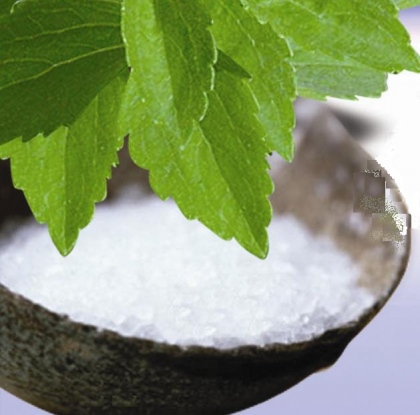
An organic substitute for sugar, without any harmful health consequences, is experimentally cultivated in the Karditsa region in North Greece, where tobacco plants were grown before. After being approved by the EU, which according to reports is expected, stevia crops will become the life-belt for many tobacco-growers, because the seeds of the stevia will be sown on former tobacco fields. Except being useful for the former tobacco-growers, the stevia is the healthy alternative for the artificial sweeteners. The leafs of the stevia are a source for natural chemicals like the stevizoid, which is 300 times as sweet as the sucrose and as sweet as the artificial sweeteners, with the only difference that it doesn’t consist of almost any calories.
In her book “The Stevia Story – A tale of incredible sweetness & intrigue,” Donna Gates describes how the Indian Guarani tribe has known for centuries about the unique advantages of the kaa he-he – the local name, which means “sweet grass.” They used the leafs of the wild stevia grass as a warm drink and made healing herbs, or they just chewed them for the sweet taste. The wide use of the stevia, from this period, is sealed in a historic document kept in the Paraguayan National Archives in Asuncion. Historians note that the locals used the plant leafs from ancient times as a sweet tea.
Up until the 1800’s the everyday consumption of stevia became a habit for the citizens of a very big region – its fame grew out of Paraguay and went to neighboring Brazil and Argentina. An Italian researcher introduced the stevia to the Europeans, who studied botany and because of his unfamiliarity of the region, he thought that he found a “rare” plant. The sweet flavor of the stevia is found when you rub the dry leafs, which can be achieved when you rub them in your hands or, for a better result, when you process it in a special plant blender.
Everyone can make a drink from stevia when they add a glass of warm water to ¼ of a glass of squashed leafs. This mixture needs to be left for 24 hours and then frozen. Cooking with stevia doesn’t require guidance and is worth it, when you keep in mind the advantages from cutting sugar in your everyday diet. Most importantly, you shouldn’t use too much of it, because it can become too sweet and leave an after taste. You should always put as much as the recipe says, even if less is put, it should be tried before putting more.
The stevia is tasty in almost all recipes, in which fruits and milk products are used, but it is also an interesting ingredient for baking. One of its biggest advantages is that under high temperatures, it doesn’t lose its sweetening qualities. Some easy recipes are lemonade from stevia, chocolate cookies, and porridge. Interesting information regarding the use, qualities, and cultivating stevia can be found at http://www.stevia.net and in Donna Gates’ book “The Stevia Story: A tale of incredible sweetness & intrigue.”